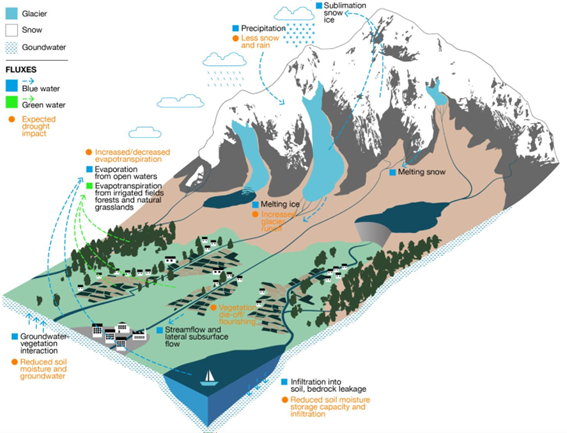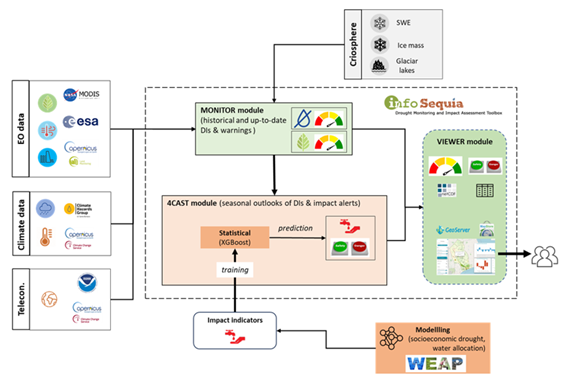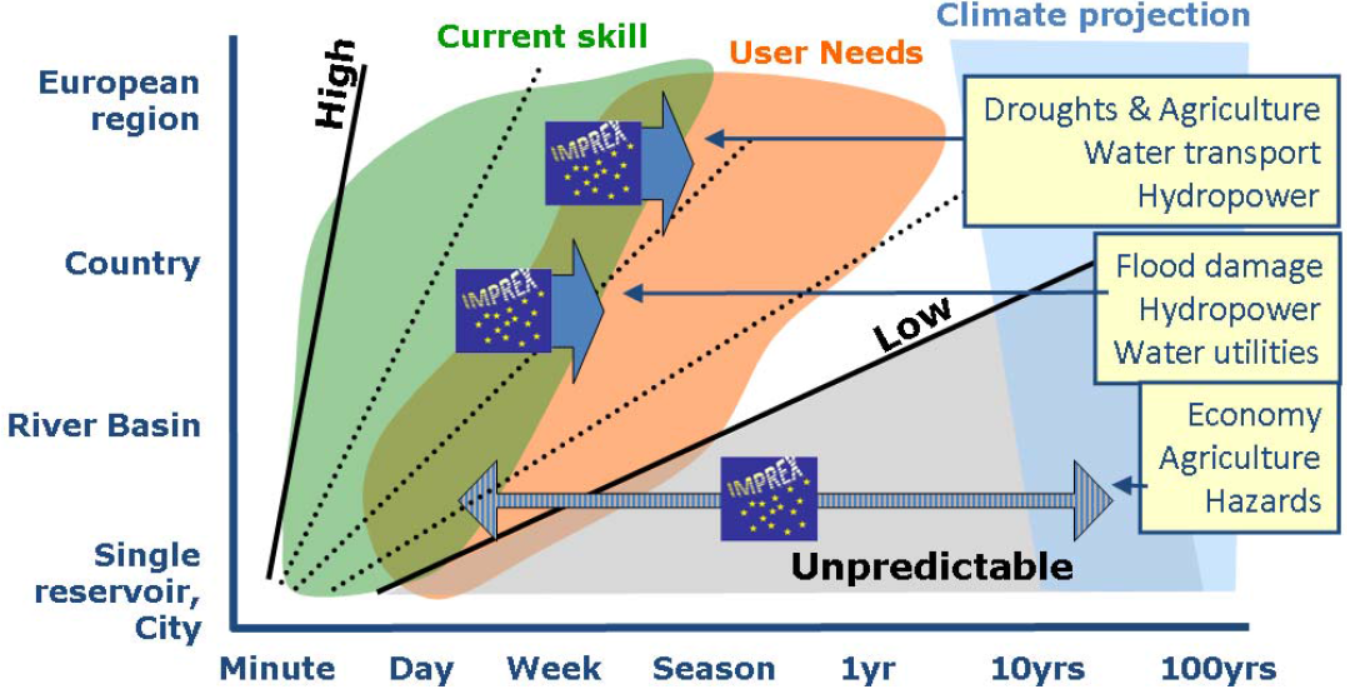La mayoría de las investigaciones recientes se han centrado en la identificación de episodios históricos basados en paleoregistros y la comprensión de sus causas climáticas, o en el estudio de megasequías “modernas” y sus impactos, generalmente en cuencas bajas y llanuras. Sin embargo, las cuencas de montaña han sido poco estudiadas y poco se sabe sobre el impacto de las megasequías en el estado y dinámica de la criosfera o torres de agua de montaña. Las cuencas vertientes dependientes de sistemas de alta montaña disponen de una capacidad para amortiguar la falta de precipitaciones y exceso de evapotranspiración que depende de las reservas de agua proporcionadas por la criosfera (nieve, glaciares y permafrost). Se presume, que la capacidad de amortiguación es limitada hasta alcanzar un punto de inflexión donde los impactos de la falta de agua y temperaturas extremas pueden verse amplificados y poner en peligro el funcionamiento del ecosistema hídrico.
MegaWat tiene un doble objetivo: 1) abordar las lagunas de conocimiento entorno a las causas hidroclimáticas de las sequías extremas y su impacto en el balance del agua de las torres de agua de montaña de Europa, haciendo especial énfasis en la concurrencia de eventos compuestos y los efectos en cascada y multiescala, y 2) desarrollar y proponer nuevas estrategias de adaptación para hacer frente a la duración, extensión e intensidad de futuras megasequías y sus impactos ambientales y socioeconómicos.
Para su implementación, MegaWat se centra en los sistemas de alta montaña de Europa y sus cuencas vertientes. MegaWat ambiciona el desarrollo de tres productos:
- Producto 1. Marco metodológico para la identificación y caracterización de megasequías históricas durante el periodo instrumental, y la evaluación del papel que juega la criosfera en la amortiguación de los impactos del cambio climático y el desarrollo territorial en las cuencas vertientes. El producto 1 descansa en la combinación de herramientas de regionalización climática, modelización del balance de energía en superficie, simulación hidrológica, y códigos de evaluación y asignación optimización de recursos hídricos.
- Producto 2. Base de datos climática regionalizada de alta resolución y de acceso libre.
- Producto 3. Listado de estrategias de adaptación para la prevención y amortiguación de impactos, y el aumento de la seguridad hídrica y resiliencia de cuencas de alta montaña. Estos escenarios serán consensuados con agentes locales y partes interesadas, y su efectividad se evaluarán bajo escenarios extremos, no antes descritos pero plausibles, en tres cuencas piloto de alta montaña previamente seleccionadas por su representatividad, importancia estratégica y vulnerabilidad a las sequías.
En MegaWater, FutureWater coordina el paquete de trabajo para el desarrollo e implementación de herramientas de soporte a la decisión y adaptación a megasequías, incluyendo la organización de actividades con actores locales y partes interesadas para la priorización de intervenciones y puesta en común de resultados. El paquete de trabajo se organiza a través de dos actividades específicas: a) el desarrollo de un prototipo metodológico para cuantificación de impactos en cuencas vertientes y la identificación de puntos de inflexión para la seguridad hídrica, y b) el uso e integración de indicadores de estado de la criosfera en un sistema de alerta temprana, InfoSequia. como potenciales predictores de impacto y riesgo hídrico.


La ficha descriptiva de MegaWat se puede descargar aquí.
Agradecimientos
Este proyecto ha recibido financiación del programa Water4All con cofinanciación de CDTI y del Programa Marco de Investigación e Innovación «Horizonte Europa» de la Unión Europea”



